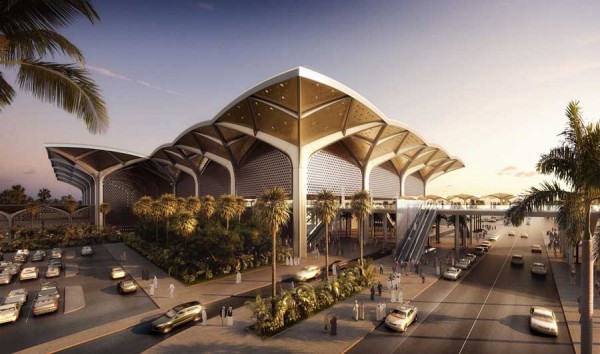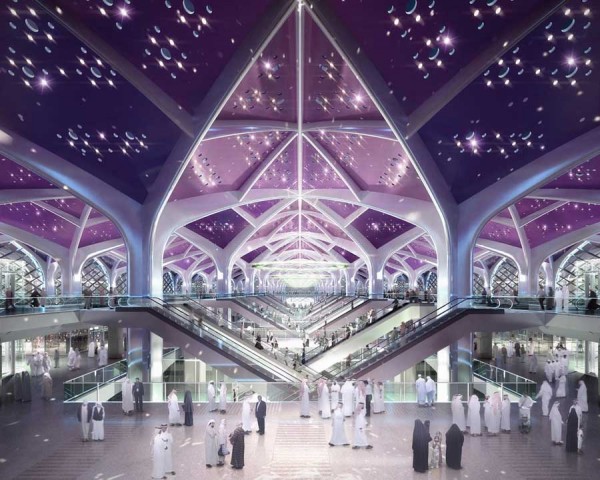The Haramain High-speed Railway designed by Foster and Partners is a major infrastructure project for the Kingdom of Saudi Arabia, connecting the cities of Makkah, Madinah, Jeddah and the developing King Abdullah Economic City (KAEC). The stations, which have been designed by a Foster + Partners and Buro Happold joint venture, with local architect, Dar Al Riyadh, are conceived as gateways to each city, filled with places to meet, shop, eat and shelter from the sun. Altogether, the large, flexible stations will cover an area more than 30 times the size of London’s Trafalgar Square and will accommodate an anticipated 60 million passengers by 2012 – approximately six times the number of passengers that take the Eurostar from St Pancras each year. This is expected to increase to 135 million passengers by 2042.
The modular approach to the stations’ design is complemented by variations in colour, which signify the four cities while remaining emblematic of the HHR system. The terminal stations of Medina and Makkah are characterised by a rich colour palette: Makkah Station references the gold leaf of the decorated Kab’ah and the city’s significance as a holy site, while Madinah Station’s vivid green colour draws inspiration from the Mosque of the Prophet. Jeddah Station features a shade of purple which has a particular resonance with the city and KAEC’s station is a futuristic blue and silver, representative of its role as a modern new city. Drawing on Islamic architecture, the design concept takes the traditional gateway arch form as the basis for its roof design. The design, common to all stations, features a sequence of 25-metre-high arches rising from the concourse, complemented by smaller 9-metre-high arches at platform level. Supported by freestanding structural trees, repeated on a 27-metre square grid, the arches connect to form a flexible vaulted roof.
By following the direction of the trains, the arrangement of spaces helps passengers navigate the stations intuitively, with few level changes and the interior spaces provide respite from the heat of the desert. Following the ‘kit-of-parts’ approach, each station has a combination of different facades according to their orientation – solid facades are used where visibility is not essential, in order to reduce solar gain. The glazed entrances to the concourse and the platforms are concealed behind a combination of external mashrabiya and the deep overhanging roof canopies, which provide additional shade. Each station is oriented according to the path of the sun, turning from Madinah Station, which faces east, to north-facing Makkah Station. Their changing position is articulated through openings in the roof, through which light tubes draw daylight down to the concourse level and animate the space. At night, spotlights between the perforations give the impression of stars in a night sky. Spherical chandeliers, suspended between the arches, provide focused lighting, mediating between the scale of the roof and concourse level and accentuating the rhythm of the structure.
















